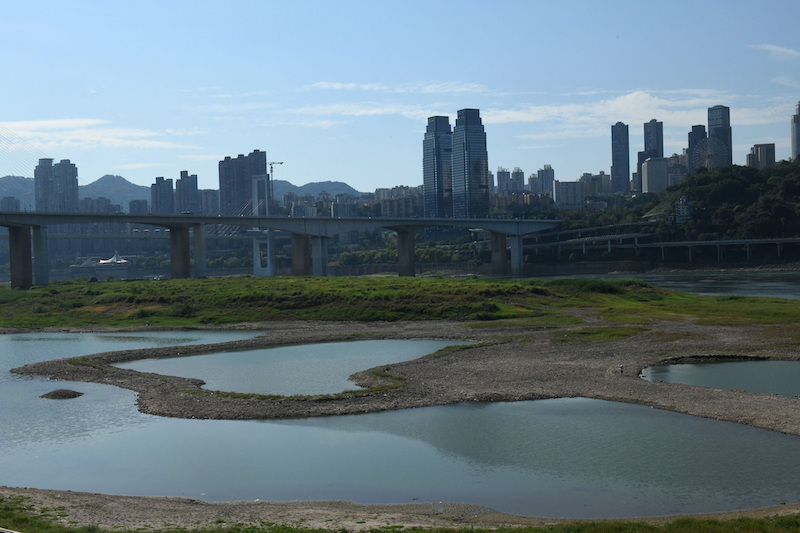Provincial governments in China are racing to help irrigate crops ahead of the autumn harvest and find new sources of water to alleviate a severe drought in the Yangtze River basin, which looks set to spread to four more provinces.
Weather experts and water ministry officials have warned that the record heatwave that has disrupted life for citizens living near the upper and middle reaches of the country’s longest river – already over two months long – could last for weeks.
The heatwave, caused by a larger than usual Western Pacific subtropical high, has slashed hydropower supplies and dried up large expanses of arable land.
Normal water flows could still be months away, with rainfall expected to remain low until the end of this month and beyond, Liu Zhiyu, an official at the Ministry of Water Resources, said at a briefing late on Wednesday.
“It is expected that in September, water inflows in the middle and lower reaches of the Yangtze will still be low, and the drought in Anhui, Hubei, Hunan and Jiangxi could develop further,” Liu warned, referring to four major provinces on the middle reaches of the river.
ALSO SEE: China Shuts Factories in Sichuan Amid Worst Heatwave Since 1961
Crops at ‘Critical’ Stage
Rainfall in the Yangtze basin has been around 45% lower than normal since July, and high temperatures are likely to persist for at least another week, according to official forecasts.
Authorities in the region also warned that temperatures would continue to exceed 40 degrees Celsius (104 Fahrenheit) on Thursday, with parts of Chongqing set to go beyond 44 degrees, putting further pressure on power supplies amid surging air conditioner use.
Water levels on the main trunk of the Yangtze and the vital flood basin lakes of Dongting and Poyang are now at least 4.85 metres (16 feet) shallower than normal, and the lowest on record for the period, officials said.
Rice and other autumn crops were now at a “critical period” when it comes to irrigation, warned Liu Weiping, Vice-Minister of Water Resources, at the same briefing on Wednesday.
He said around 820,000 hectares (2 million acres) of arable land from Sichuan in the southwest to central China’s Anhui have suffered damage, affecting 830,000 people as well as 160,000 head of livestock, mostly in areas relying on smaller reservoirs or mountain springs for irrigation.
Upstream reservoirs have opened their gates to replenish storage levels at the Three Gorges Dam, which will release 830 million cubic metres downstream over the coming days, Liu said.
Local governments are also being urged to ensure that enough water resources are stored for emergency use, and to make use of additional water sources, including mountain springs and streams, he said.
- Reuters with additional editing by Jim Pollard
ALSO SEE:
China’s Tencent Reports First Revenue Drop
Malaysia’s Tenaga Nasional to Spend Big on Clean Energy Shift
China, Malaysia Seen Among States at Worst Risk of Climate Defaults
























